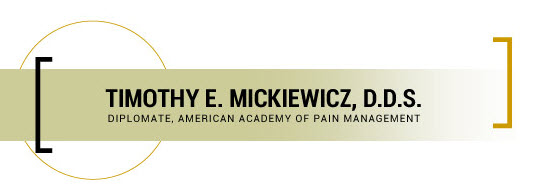
Achieving a straight, healthy smile is a journey that many embark on, and exploring different types of braces is a crucial step in the process. In this blog, we’ll explore the various options available in the world of orthodontics, from traditional metal braces to innovative clear aligners and everything in between.
Whether you’re considering orthodontic treatment for yourself or a loved one, understanding the contrasts between different types of braces can help you make an informed decision that aligns with your lifestyle, preferences, and orthodontic needs. Contact Timothy E. Mickiewicz, D.D.S., in Sacramento, CA, at (916) 469-9178 to learn more about your options now.
In today’s blog post, Dr. Mickiewicz focuses on different types of braces. So, let’s dive in and explore the wide array of braces designed to bring you closer to the confident, radiant smile you deserve.
Traditional Metal Braces
Traditional metal braces are the tried-and-true solution for correcting misaligned teeth and bite issues. Consisting of durable stainless steel brackets and archwires, they apply steady pressure on teeth, guiding them into correct alignment over time.
Though this type of braces is noticeable, advancements in orthodontic technology have made them sleeker and more comfortable than ever before.
Their versatility allows orthodontists to address a wide range of dental problems effectively. Patients typically undergo periodic adjustments to ensure steady progress throughout treatment.
While other options may offer aesthetic advantages, metal braces remain a reliable choice for many due to their affordability, durability, and proven track record in achieving beautiful, functional smiles.
Ceramic Braces
Ceramic braces offer a discreet alternative to traditional metal braces, blending in with the natural color of teeth for a less noticeable orthodontic treatment.
These braces provide a more aesthetically pleasing option while still effectively straightening teeth and correcting bite issues. Ceramic braces are popular among individuals who desire a more subtle orthodontic solution without sacrificing effectiveness.
Lingual Braces
When it comes to different types of braces, lingual braces may be the most discreet option. The braces work by positioning brackets and wires on the inner surfaces of the teeth, making them virtually invisible from the outside. This unique placement allows for effective tooth alignment and bite correction while maintaining a natural appearance.
Ideal for individuals concerned about the aesthetic impact of traditional braces, lingual braces provide a subtle alternative without compromising treatment efficacy.
While they may take some time to adjust to and require meticulous oral hygiene, the results are transformative, offering a straighter smile without the noticeable appearance of braces.
Self-Ligating Braces
Self-ligating braces represent a modern advancement in orthodontic technology, offering a more efficient and comfortable treatment experience.
These braces utilize specialized brackets equipped with built-in clips or doors that hold the archwire in place without the need for traditional elastic ligatures.
By reducing friction and pressure on the teeth, self-ligating braces often result in shorter treatment times and fewer adjustments.
Additionally, they are easier to clean and maintain, promoting better oral hygiene throughout treatment.
With their sleek design and innovative mechanics, self-ligating braces provide patients with a convenient and effective solution for achieving a beautifully aligned smile with minimal discomfort and inconvenience.
Clear Aligners
When it comes to different types of braces, clear aligners (like Invisalign®) may be the most popular option due to their practicality and convenience.
Custom-made from transparent plastic, these non-permanent trays gradually shift teeth into alignment without the need for brackets or wires. Their nearly invisible appearance makes them popular among individuals seeking lowkey orthodontic solutions.
Clear aligners are not only aesthetically appealing but also offer unsurpassed flexibility. That’s right – patients can easily remove them for eating, brushing, and flossing. This allows for greater comfort and convenience during treatment.
With their precise fit and gradual adjustments, clear aligners provide a comfortable and effective way to achieve a straighter smile with minimal disruption to daily life.
Palatal Braces
Palatal braces (sometimes called palatal expanders or palatal arches) are orthodontic devices used to address specific bite issues and widen the upper jaw.
These braces consist of a metal framework that a dentist attaches to the roof of the mouth (palate) and connects to the molars via bands or screws.
By applying gentle pressure to the palate, palatal braces gradually widen the upper jaw to create more space for crowded teeth, correct crossbites, and improve overall dental alignment.
While patients may experience some discomfort or pressure initially, palatal braces are effective in treating various orthodontic concerns and contribute to achieving a harmonious and functional bite.
Damon Braces
Damon braces are a modern iteration of traditional braces, offering a more comfortable and efficient orthodontic experience. Unlike traditional braces that require elastic ties to hold the wires in place, Damon braces feature a self-ligating system with sliding doors or clips integrated into the brackets.
This design reduces friction and allows for smoother tooth movement, resulting in potentially shorter treatment times and fewer adjustments.
With Damon braces, patients may experience less discomfort and enjoy easier maintenance of oral hygiene throughout treatment.
Their innovative technology and sleek design make Damon braces a popular choice for individuals seeking a convenient and effective solution for achieving a beautifully aligned smile.
Mini Braces
Mini braces (frequently called small or low-profile braces) offer a discreet orthodontic option for patients seeking a less noticeable treatment.
These braces feature smaller brackets and archwires compared to traditional braces, reducing their visibility and overall impact on appearance.
While they may not be suitable for complex orthodontic issues, mini braces are effective in addressing mild to moderate misalignment and bite problems.
Their compact design provides greater comfort and ease of maintenance, making them a popular choice among individuals who prefer a subtle approach to orthodontic treatment without compromising on effectiveness.
Hybrid Braces
Hybrid braces combine the features of different types of braces, offering a customized orthodontic solution tailored to individual needs.
By blending elements from traditional metal braces, ceramic braces, and other orthodontic appliances, hybrid braces provide patients with the benefits of each approach.
For example, a hybrid system might use ceramic brackets on the upper teeth for a more discreet appearance while utilizing metal brackets on the lower teeth for added durability and effectiveness.
This versatile approach allows dentists and orthodontists to address a wide range of dental issues while accommodating patient preferences for aesthetics, comfort, and treatment goals.
Different Types of Braces in Sacramento, CA
These are just a few different types of braces that you can explore with our dentist in Sacramento, CA. If you’d like to schedule a consultation, contact Timothy Mickiewicz, D.D.S., online or call (916) 469-9178 to learn more about your options.


